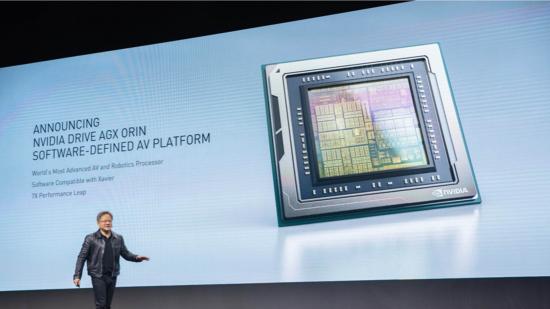Four years in the making, Nvidia’s latest autonomous self-driving vehicle DRIVE AGX system-on-chip (SoC), Orin, is built on “Nvidia’s next generation GPU architecture.” Could this be our first official glimpse of Turing’s successor?
Consisting of 17 billion transistors in total, Orin integrates an unspecified “next-generation GPU architecture” alongside a handful of ARM Hercules CPU cores. With a constant feed of data requiring analysing and inference, Orin also features dedicated deep learning and computer vision accelerators capable of 200 trillion operations per second. That all makes for performance seven-fold that of Nvidia’s Xavier self-driving chip, the company says.
Which architecture Nvidia is referencing to within its latest press release (via VideoCardz) remains a mystery, however. An Nvidia Ampere architecture has been heavily implied, even many moons prior to Turing’s release, and we know Nvidia has trademarked the “Hopper” name (after Grace Hopper). One of the two may lay claim to the Orin SoC following a later announcement.
All we know of Nvidia’s next-gen architecture so far is that it will likely be produced on Samsung’s 7nm process. Today’s Turing GPUs, including the RTX 20-series, are built on TSMC’s 12nm process, but Nvidia has confirmed it intends to ramp production on Samsung’s advanced process node during 2020.

Over in conjecture corner, we’d suspect Nvidia to compete with AMD’s RDNA 2 graphics cards sometime around Q3/Q4, 2020 with its own revamped graphics cards – likely the 30-series barring any tomfoolery on Nvidia’s end.
A preliminary teaser of next-gen tech in the burgeoning self-driving vehicle SoC business isn’t without precedent, either. Nvidia has previously leaned on a brand new GPU architecture for its autonomous vehicles with Drive PX Pegasus, our first glimpse at what was then known simple as a “post-Volta” generation GPU – now known as Turing.
